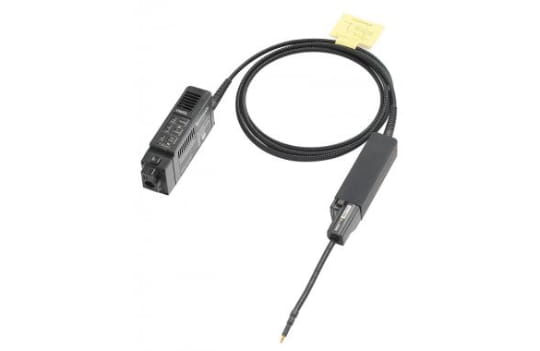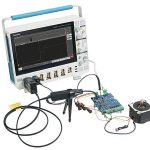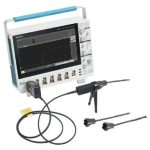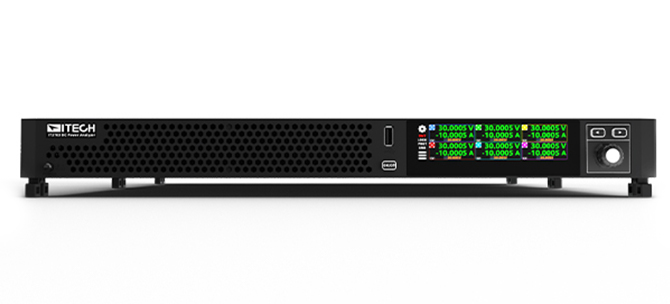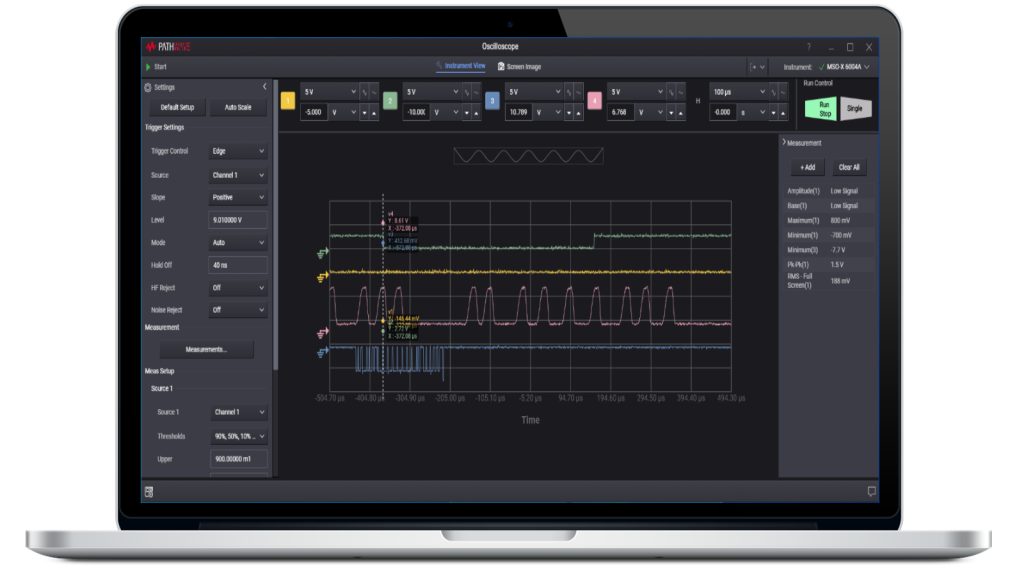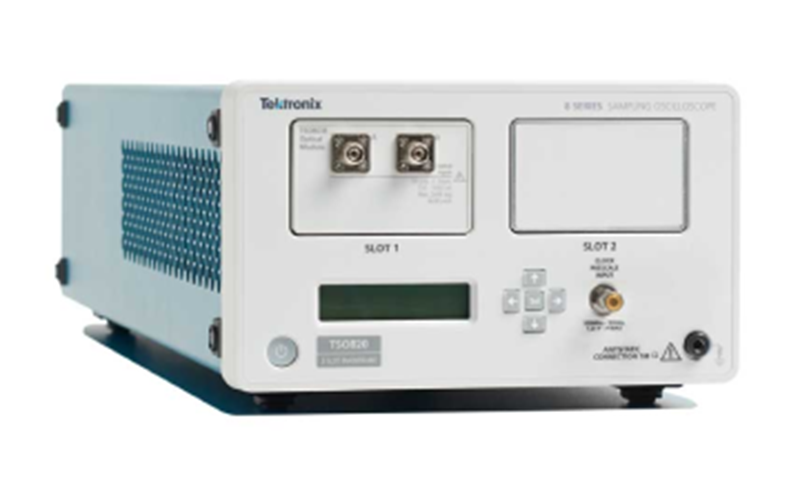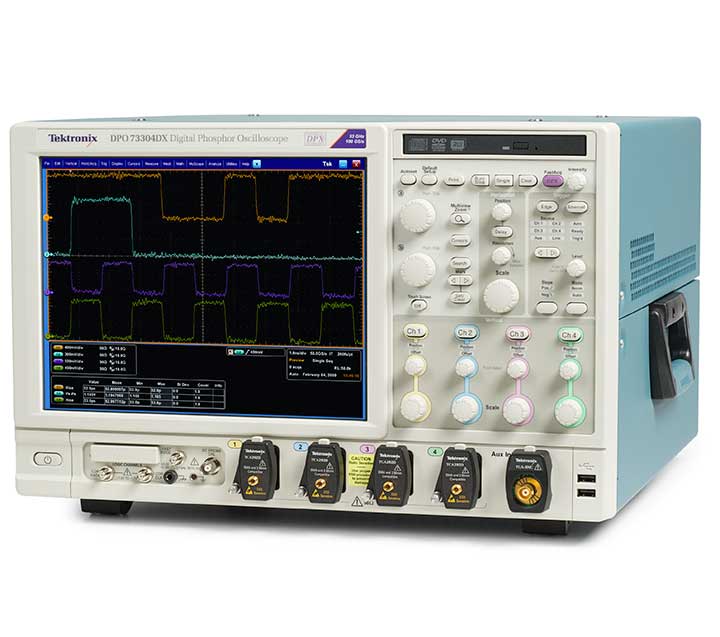What is an isolation probe?
Isolated probes use electrical (optical) or RF isolation to isolate the probe's reference voltage from the oscilloscope's reference voltage, which is usually grounded. This allows power supply designers to accurately resolve high-bandwidth, high-voltage differential signals in the presence of large common mode voltages. Tektronix has developed a new technology (IsoVu) that uses galvanic isolation to provide best-in-class common-mode rejection in high bandwidth probes.
The combination of isolation and high-frequency of the IsoVu probe provides power supply designers with more accurate measurements than high-bandwidth conventional differential probes used to measure high-voltage signals. Application examples include:
- Switching Mode Power Supply Design
- Power FET Design/Analysis for Wide Bandwidth GaN and SiC Devices
- Inverter Design
- Motor Drive Design
- BCI or ESD measurements
- Current shunt measurement
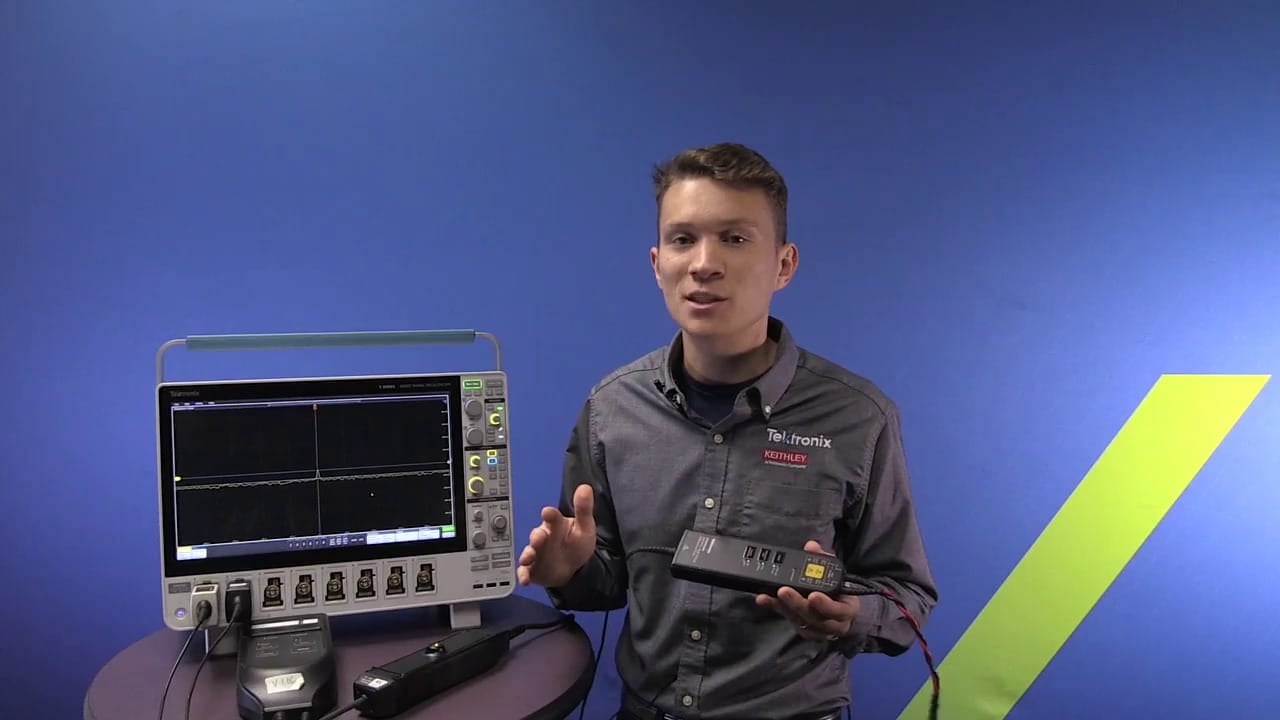
Lower common mode noise, more details
IsoVu technology uses fiber optic power and an optical analog signal path to provide complete galvanic isolation between the measurement system and the DUT. The isolation greatly reduces common-mode interference by supporting the probe to float independently of common-mode voltages.
Combined with the 4, 5, or 6 series MSOs, IsoVu provides an efficient and reliable way to address high-bandwidth differential signals with fast reference conversions, allowing you to spend less time on various design tasks:
- Float Measurement in Power Supplies
- Measurement of current through shunt resistors
- Debugging ESD and EMI Sensitive Issues
- Disconnect the grounding circuit

High differential voltage over a wide bandwidth
With traditional differential probes, you have to choose between high bandwidth and high voltage. the IsoVu probe uses shielded coaxial cable and isolation to provide high bandwidth and a differential voltage range of ±2500V.
The second-generation IsoVu TIVP probes are available in a range of bandwidths from 200 MHz, 500 MHz and 1 GHz to fit your budget and build a workbench with the performance you need for your specific project.
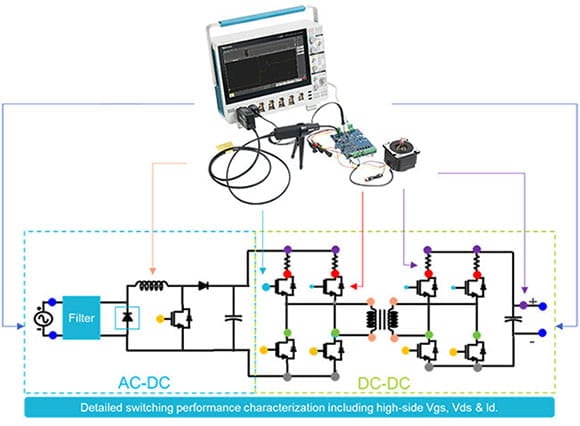
Innovative technology with space-saving design
The second generation IsoVu probe offers the same bandwidth, common-mode rejection performance, and voltage range as our original IsoVu probe, but is 1/5 the size and removes the separate controller box. The compact probe and oscilloscope connector contains the laser and analog electronics. Compared to the original IsoVu probe, the second-generation optically isolated probe also features:
- Better DC gain accuracy
- Better step response characteristics
- More built-in ranges
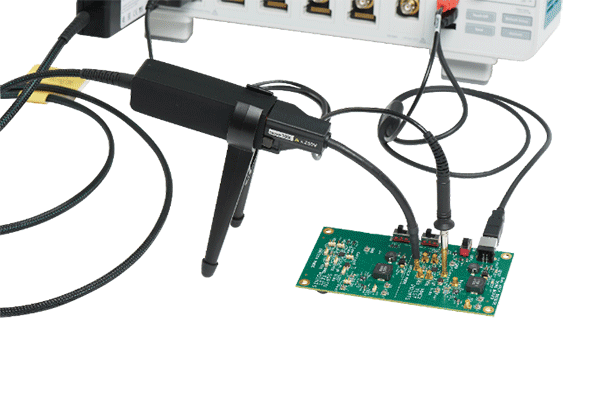
Simple connection, higher performance
The IsoVu probe tip features a range of connections and accessories that provide high performance and accessibility.
For example, the MMCX connector is an economical, widely available connector that provides a stable, hands-free test point with optimal bandwidth and common mode rejection. Its rugged metal body shields the center conductor and minimizes the ground loop area to minimize interference.
Additional accessories are available to adapt the probe ends to a variety of connection methods. For applications requiring differential voltages greater than ±250V, additional policy ends are available in 0.100" and 0.200" spacing.
When the probe is not in use, the sensor probe has 1MΩ and 50Ω switchable termination at the probe SMA connector. This feature effectively adds an isolated channel to any compatible oscilloscope.

| model number | bandwidths | differential voltage | common-mode voltage (electronics) | Common mode rejection ratio | Fiber optic cable length | quote |
|---|---|---|---|---|---|---|
| TIVP02 | 200 MHz | ±2500 V | ±60kV | DC: 160dB | 2 meters | US $14,700 |
| 100 MHz: 100 dB | ||||||
| 200 MHz: 100 dB | ||||||
| TIVP02L | 200 MHz | ±2500 V | ±60kV | DC: 160dB | 10 meters | US $21,300 |
| 100 MHz: 100 dB | ||||||
| 200 MHz: 100 dB | ||||||
| TIVP05 | 500 MHz | ±2500 V | ±60kV | DC: 160dB | 2 meters | US $27,200 |
| 100 MHz: 100 dB | ||||||
| 200 MHz: 100 dB | ||||||
| TIVP05L | 500 MHz | ±2500 V | ±60kV | DC: 160dB | 10 meters | US $33,400 |
| 100 MHz: 100 dB | ||||||
| 200 MHz: 100 dB | ||||||
| TIVP1 | 1 GHz | ±2500 V | ±60kV | DC: 160dB | 2 meters | US $39,800 |
| 100 MHz: 100 dB | ||||||
| 200 MHz: 100 dB | ||||||
| TIVP1L | 1 GHz | ±2500 V | ±60kV | DC: 160dB | 10 meters | US $45,600 |
| 100 MHz: 100 dB | ||||||
| 200 MHz: 100 dB |
| Key indicators | Tektronix | Tektronix | Tektronix |
|---|---|---|---|
| TIVP(band) TIVPMX50X end part*) | TIVH(band) MMCX250X end part*) | THDP0200 | |
| No longer available | |||
| appliance | High side VGSWide bandwidth (GaN and SiC) qualification, SMPS optimization, temperature testing (using SMA cables) | High side VGS(math.) genus | General. |
| Wide Bandwidth (GaN and SiC) Verification, SMPS Optimization | Si and IGBT-based power electronics | ||
| bandwidths | 200 MHz, 500 MHz, 1 GHz | 200 MHz, 500 MHz, 800 MHz | 160 MHz, 200 MHz |
| rising time | 2ns, 850ps, 450ps | 2ns, 850ps, 450ps | 1.75ns |
| CMRR @DC | 160 dB | 160 dB | 80 dB |
| CMRR @100 MHz | 85 dB | 85 dB | 26 dB |
| Differential Voltage Range | ±250V* | ±250V* | 150V, 1500V |
| Common mode voltage range | ±60kV | ±60kV | ±1500V |
| Bias Voltage Range | ±250V* | ±250V* | 50X Oscilloscope Input Bias Range ±50V (typical) |
| Noise (200mV - 3V measurement) | 41.8mVpp | 79.8mVpp | 110mVpp |
| DC gain accuracy | 0.6% typ. | 3% | 2% |
| Input Impedance | 10 MΩ || 3 pF * | 10 MΩ || 2 pF | 10 MΩ || 2 pF |
| Operating Temperature Range | 0°C to 50°C (sensor head) | 0°C to 70°C (sensor head) | 0°C to 40°C |
| Oscilloscope Compatibility | 4/5/6 Series MSOs only | All TekVPI Oscilloscopes | All TekVPI Oscilloscopes |
| (including 4/5/6 series MSOs) | (including 4/5/6 series MSOs) | ||
| *The value closest to THDP0200 is selected for comparison purposes. |
Float measurement on power supply
High-voltage signal measurements in half-bridge power converters are challenging because the source or collector of the reference measurement can oscillate up and down rapidly. wide-bandwidth devices such as SiC and GaN FETs are even more difficult to measure because they can switch to high voltages in a matter of nanoseconds. Noise from rapidly changing common-mode voltages leaks into differential measurements and hides the true state of VGS and VDS. the IsoVu probe's unmatched full-bandwidth common-mode rejection allows the true state of the signal to be seen, often in a single pass.

Measurement of current through shunt resistors
Accurate current measurements can be easily obtained by measuring the differential voltage across the shunt resistor. However, this can be a serious challenge due to the influence of common-mode voltages, and the IsoVu, with its high common-mode voltage range and high common-mode rejection, is able to perform tests that other products cannot.
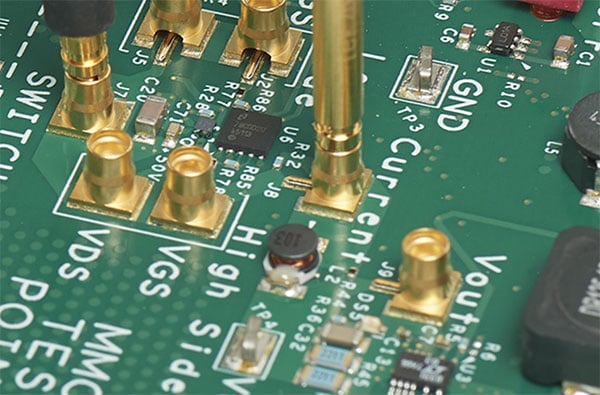
Debugging ESD Issues
Going beyond functional testing to address the root cause of ESD failures can be unsatisfactory. With conventional electrical probes, even if the oscilloscope is located outside the Faraday cage, ESD discharges are coupled into the probe and propagate down the cable to the oscilloscope. Any waveform seen on the oscilloscope is not representative of what is actually happening at the test point. But thanks to optical isolation, IsoVu Generation 2 probes prevent coupling and provide more accurate DUT behavior during ESD and EFT testing than just simple system testing.
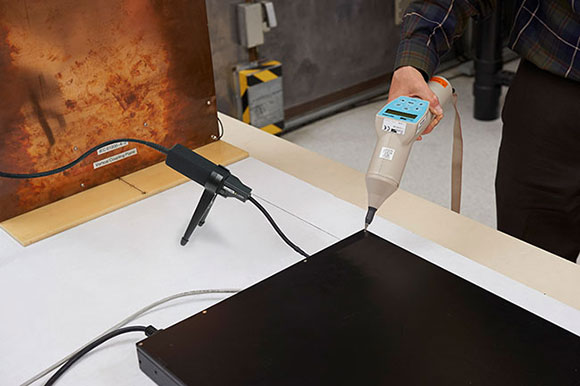
 Comprehensive test and measurement service provider-Shenzhen Weike Electronic Technology Co.
Comprehensive test and measurement service provider-Shenzhen Weike Electronic Technology Co.

